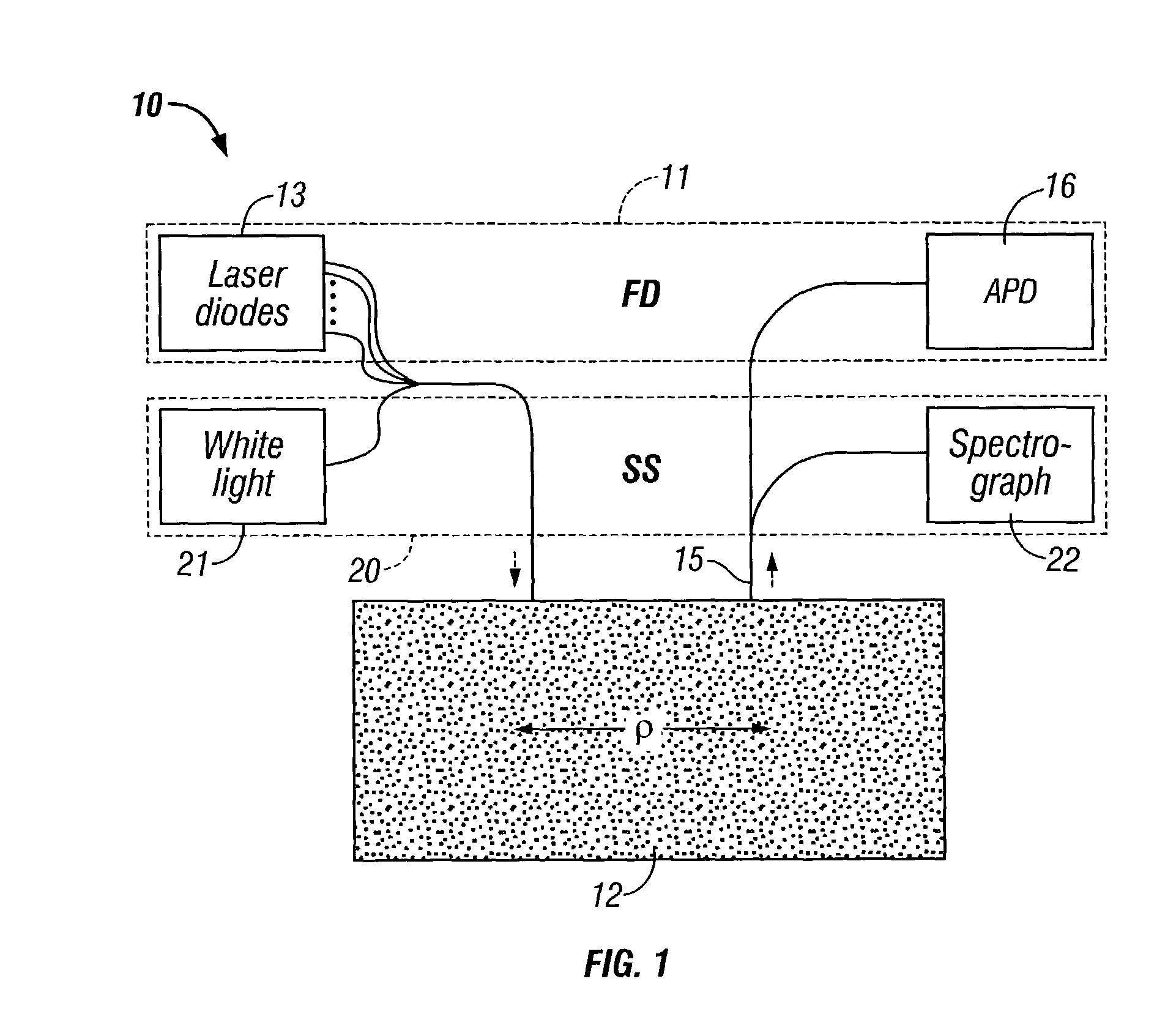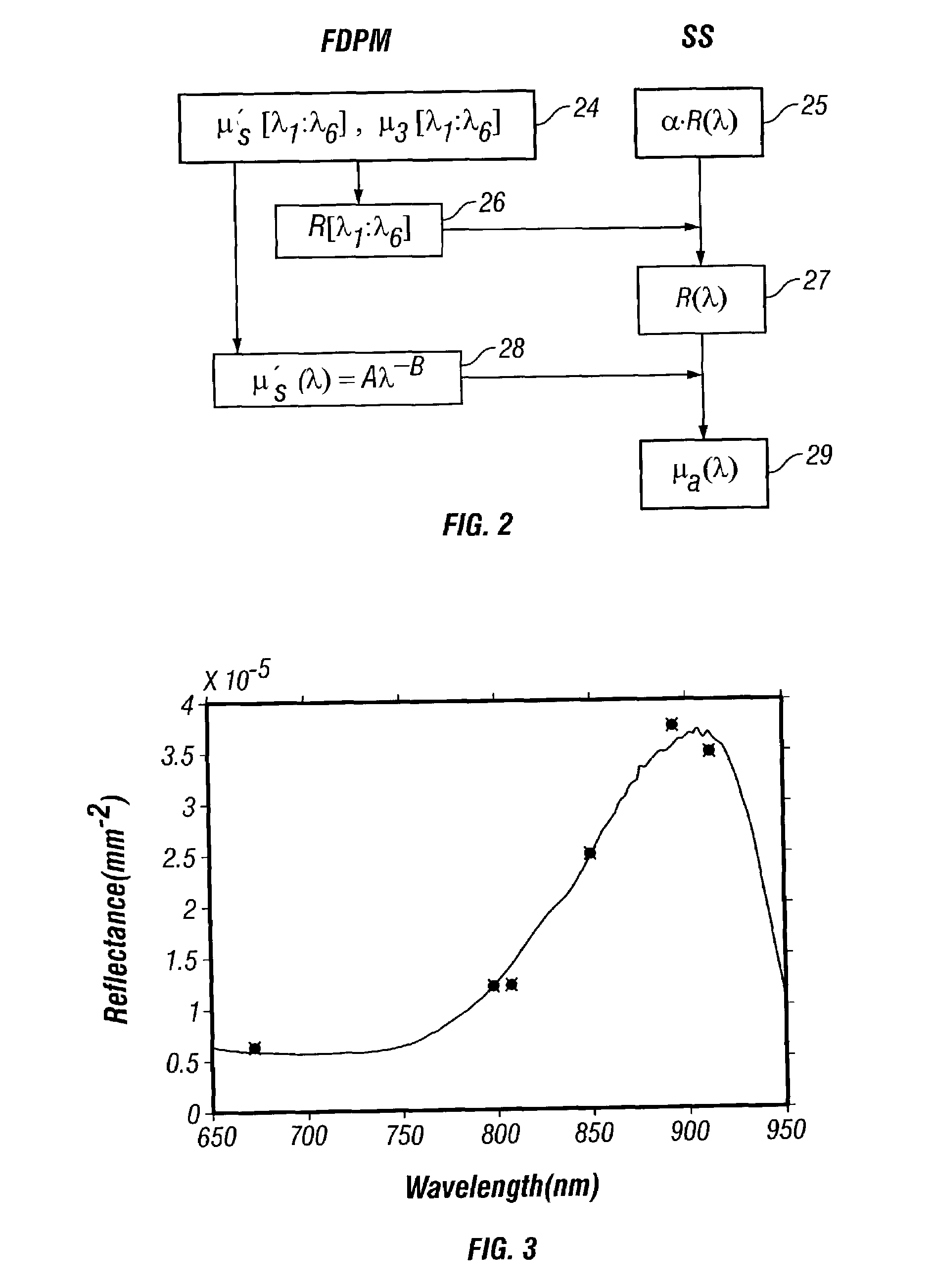Quantitative broadband absorption and scattering spectroscopy in turbid media by combined frequency-domain and steady state methodologies
a broadband absorption and scattering spectroscopy technology, applied in the direction of optical radiation measurement, instruments, spectrometry/spectrophotometry/monochromators, etc., can solve the problems of difficult maintenance, different merits and limitations of three techniques, and the data from the prediction of the model is distorted, so as to achieve a wide range of penetration depth
- Summary
- Abstract
- Description
- Claims
- Application Information
AI Technical Summary
Benefits of technology
Problems solved by technology
Method used
Image
Examples
Embodiment Construction
[0022]Referring to FIG. 1, there is shown a schematic diagram of a representative embodiment of apparatus 10 constructed in accordance with the present invention for analyzing turbid media. Such apparatus 10 includes apparatus 11 for performing frequency-domain photon migration (FDPM) measurements on a turbid medium sample 12. The frequency-domain (FD) apparatus 11 includes a plurality of laser diodes 13 for emitting light energy at a plurality of different wavelengths. In the present embodiment, the plurality of laser diodes 13 includes seven laser diodes which emit light energy at wavelengths of 672, 800, 806, 852, 896, 913 and 978 nanometers (nm). At least one delivery optical fiber 14 is provided for delivering modulated light energy from the laser diodes 13 to a delivery point on the surface of the turbid medium sample 12. The output powers of each of laser diodes 13 is less than 20 milliwatts (mW) at the sample 12.
[0023]A mechanism (not shown) is provided for modulating the li...
PUM
 Login to View More
Login to View More Abstract
Description
Claims
Application Information
 Login to View More
Login to View More - R&D
- Intellectual Property
- Life Sciences
- Materials
- Tech Scout
- Unparalleled Data Quality
- Higher Quality Content
- 60% Fewer Hallucinations
Browse by: Latest US Patents, China's latest patents, Technical Efficacy Thesaurus, Application Domain, Technology Topic, Popular Technical Reports.
© 2025 PatSnap. All rights reserved.Legal|Privacy policy|Modern Slavery Act Transparency Statement|Sitemap|About US| Contact US: help@patsnap.com



